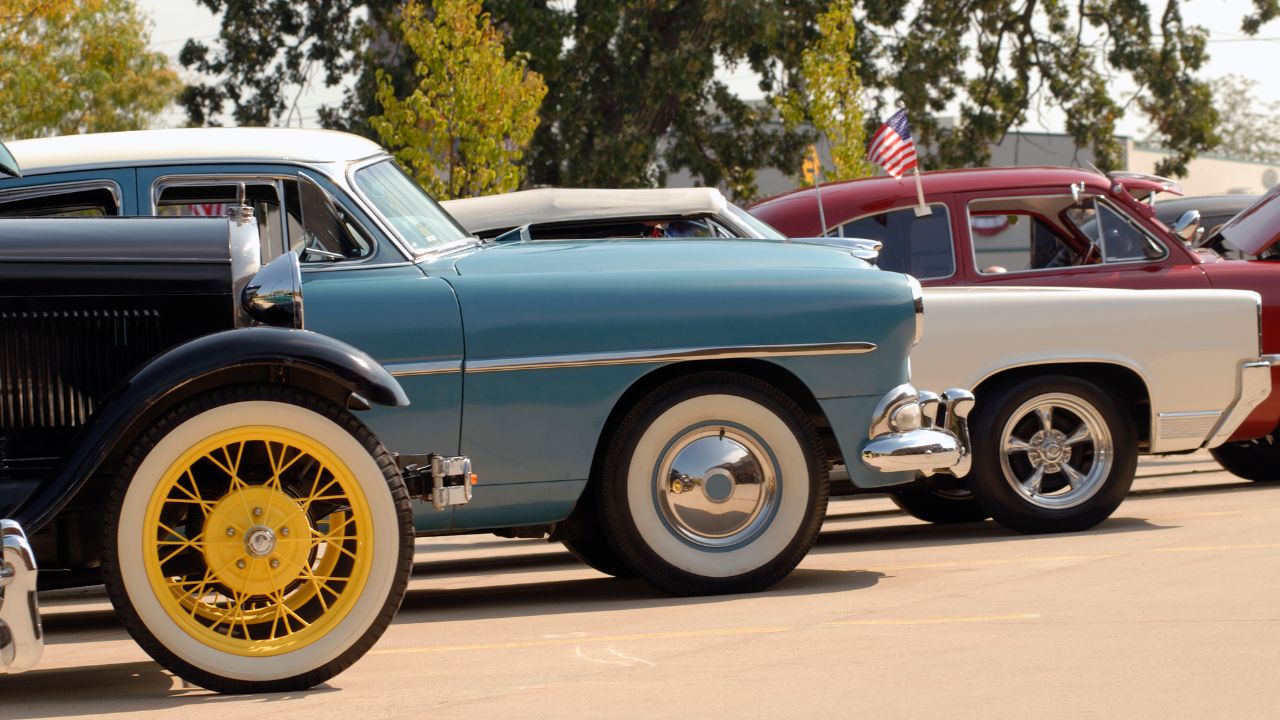
Grand nationals are races that showcase America's most iconic muscle cars. Two of these cars are the Chevrolet Impala SS 409 and Chevelle SS 454. Each uses a 6.2-liter V8 engine to produce 415 horsepower. Comfortable sport seats are included as well as the SS Logo. The SS Logo is a unique part of every car's exterior design. It is also one of the most iconic symbols in Grand National.
Chevrolet Impala SS 409
Chevrolet Impala SS, the first car with a small block V8 engine, was released in 1996. This engine was the very first to be featured in a Chevrolet sedan with front-wheel drive since 1996 Caprice. This engine produced 303 horsepower. It was also equipped with Active Fuel Management. The SS is a luxury sports car, with an athletic design that allows drivers to use a wide range driving features. It was also available in coupe and convertible versions.

Grand National muscle car
The Buick National is one the most recognizable American muscle cars. Its turbocharged 3.8-liter V-6 put Corvettes to shame, and its automatic transmission made it a perfect muscle car. While the Buick GNX didn't live up to the standards of a true muscle car, it was still one of the coolest cars to come out of the Buick factory since the GNX era. It is also very expensive to own one 30 years later.
Chevrolet Chevelle SS 454
The 1972 Chevrolet Chevelle SS featured a very unique instrument cluster. The standard instrument cluster had a speedometer along with a large fuel indicator in a blanked opening. The special instrument panel featured a tachometer with a clock. The fuel gauge was moved to a smaller cluster at the panel's outer edges. Other options included Quad headlights and Stereo Stripes.
1970 Chevy Chevelle SS
The interior of the 1970 Chevy Chevelle SS is reminiscent of the iconic muscle car from the 1960s, with its bench seat and center console. Despite its similarities, the 1970 Chevelle SS is unique, with its large, circular gauges and lower valance. The optional chrome bumpers, exhaust system and exhaust add style and flair. This car truly embodies classic muscle car styling. These are just a few of the key features that make the 1970 Chevy Chevelle Special Edition SS so special.
1969 Dodge Charger
In 1968, the Dodge Charger was a famous muscle car. It was time to make it mainstream. Dodge hired famed designer Richard Sias, who designed an hourglass-shaped monster with a wide stance. 1969 Dodge Charger was an open-top two-door hardtop. It had a wheelbase measuring 117 inches and a length measuring 208 inches. It sold 96.100 units. The package also included a track/road performance package.

1969 1/2 Dodge Super Bee A-12
This is one of the most famous muscle cars of all time. This is the 1969 1/2 Dodge Super Bee, an outstanding example of this design. The car was made from 1968 to 1971. It had three Mopar V8 engines. The Magnum, 7.2-liter Six-Pack and legendary 7.0-liter Hemi models were available. Although the car is uncommon, it features a supercharged Ramcharger Engine and front-wheel driving.
FAQ
Is it hard to be a mechanic apprentice?
It's not easy, but you learn fast, and there are many opportunities for advancement.
You must be patient and persistent. You must also know how to fix cars, trucks, and motorcycles.
There is a lot of pressure from customers and family members who want you to succeed. You shouldn't feel pressured to make decisions that you don't like.
If you enjoy fixing cars, it could be a great career choice. You can make a decent living and build your business.
You might choose to take a different route. This is where you might be interested in becoming a technician.
This means that you can use your technical knowledge to help other workers. Technical support could include helping technicians to troubleshoot issues or teaching them new techniques.
You can also become a service advisor. This is where you can offer advice and assistance to customers who bring their vehicles to a garage.
It all depends on your goals. There are many choices available and you can choose what suits you best.
What length is an automotive mechanic apprenticeship?
It takes approximately three years to complete an automotive mechanic apprenticeship. This includes two year at school as well as two years as an apprenticeship. The first year teaches you all aspects, from theory to practical skills and safety procedures. This year, you will also learn how to safely and efficiently use tools. After the completion of the first year, you will spend another year on the job training. Here you'll gain valuable experience in different trades. These are also the times you can attend formal courses.
The last year of your program will be spent earning qualifications and becoming certified. These include NVQs or National Vocational Qualifications. These are earned after passing exams that cover specific topics in the industry. There are also HNCs (Higher National Certificates), which cover general subjects like management, business administration, customer service, and more. City & Guilds certificates offer qualifications in certain trades.
What qualifications are necessary to become a truck driver mechanic?
You don't have formal qualifications for this role, but you are very experienced working on trucks and engines. Your experience is invaluable as you know how to diagnose problems quickly and efficiently.
Additionally, you have a solid knowledge of diesel technology that will enable you to determine what parts are necessary to repair our vehicles.
What is the difference in a mechanic and an auto technician?
They are both similar, but not identical. A mechanic repairs cars while an automotive technician does maintenance on them.
A mechanic should be able to do simple tasks quickly and have good manual dexterity. They should be able to accurately diagnose problems and repair them efficiently.
A technician in automotive is more technical than a mechanic. They must be able and able to read blueprints as well as use tools like drills or wrenches.
They must also be able to carry out complex procedures safely. They need to be familiar with various types of engines and electrical system.
They should also be able understand how different parts interact.
The result is that a mechanic often earns less than an auto technician. But there are many opportunities for both jobs.
What are the requirements of an auto technician?
You must have completed high school or GED with good grades in maths and English. Additionally, you will need to be proficient in reading and writing. Before you can start working, you will have to pass a written exam and take a series practical tests.
How long is an automotive course?
An automotive course lasts 3 years.
The first year of your training is devoted to theory. You will learn all about cars. The second year is dedicated to practical training, where you will learn how to fix cars, drive them, and do other jobs around the car. The final year is spent doing a placement at a local garage, which gives you experience in fixing real-world problems.
Is being an auto mechanic a promising career choice?
The automotive industry is full of exciting opportunities for those who are dedicated to excellence. Working hard and learning from others is the best way to be successful in this field.
Your job will require you to be a good communicator as you'll be talking to customers and other employees. It is important that you are willing to travel, work long hours and be able to commute.
If you're interested in pursuing a career in automotive, consider taking classes at community colleges and universities. Many schools offer programs for students who are interested to learn about auto sales, customer service, or repair.
Mechanical engineering should be your first choice for a degree. You can get your bachelor's degree in as little as four years.
Many employers will also hire graduates straight from school. You should start looking for employment as soon as you are able to continue your studies part-time.
After you have completed your education, you will likely need some training to be able to work as an automotive technician.
You will need to pass the Automotive Service Excellence certification exam. This test covers topics such engine maintenance as brakes, steering, suspension, etc.
After passing the ASE test you can apply for a National Institute for Automotive Service Excellence (NIASE) license.
A license allows you to perform repairs on vehicles owned by private individuals. In exchange, you'll receive compensation based on the number of services performed.
Not all states require licensing. If you intend to work in another state, however, you will need a license.
Some states don’t issue licenses until a certain amount has been completed. If you are one of these people, you might need to look for another alternative.
Statistics
- The U.S. Bureau of Labor Statistics (BLS) reports that the job outlook for automotive service technicians and mechanics is expected to decline by 4% from 2019 to 2029. (indeed.com)
- There were 749,900 jobs available for automotive service technicians and mechanics in 2016, which is expected to grow by six percent through 2026. (jobhero.com)
- Apprentice mechanics earn significantly less hourly than mechanics who have completed training, with a median wage of approximately $14.50 an hour, according to PayScale. (jobhero.com)
External Links
How To
How to get a certified mechanic
The mechanic's certifications can be used by people who wish to become professional automotive technicians. They provide an overview of all areas of auto repair, including engine diagnostics, electrical systems, brakes, suspension, steering, fuel injection, air conditioning, heating, exhaust, transmission, diagnostic tools, body repairs, collision damage repair, collision repair, paintless dent removal, motor vehicle emissions testing, and much more.
The program is composed of 12 hours classroom instruction and three month's on-the-job training at participating dealers. Students must attend 60 hours of classroom instruction per semester. In addition, they must pass a written exam which includes practical and theory questions. After completing the coursework, students can take the National Institute for Automotive Service Excellence’s (ASE) state examination. To be employed as an automotive service technician, you must have ASE certification.